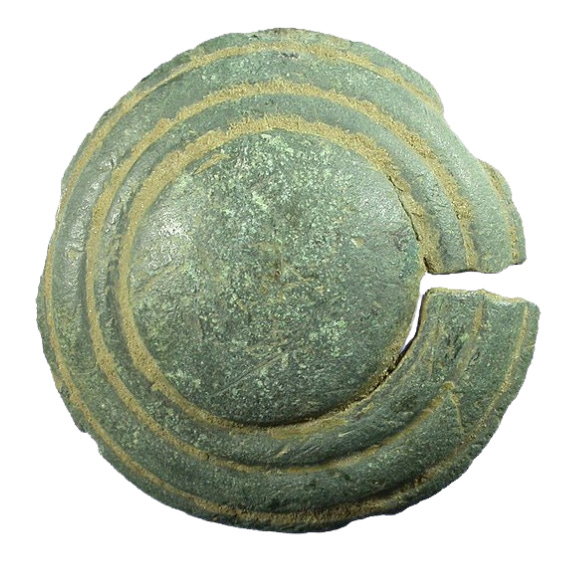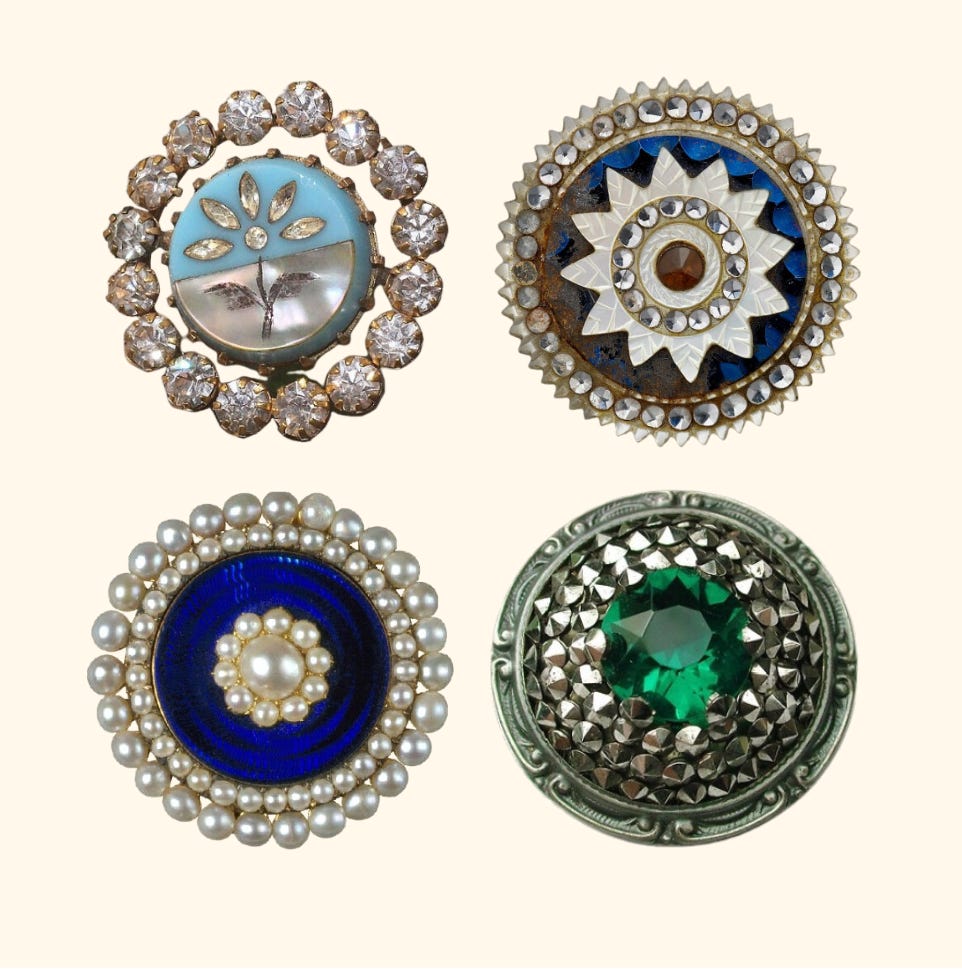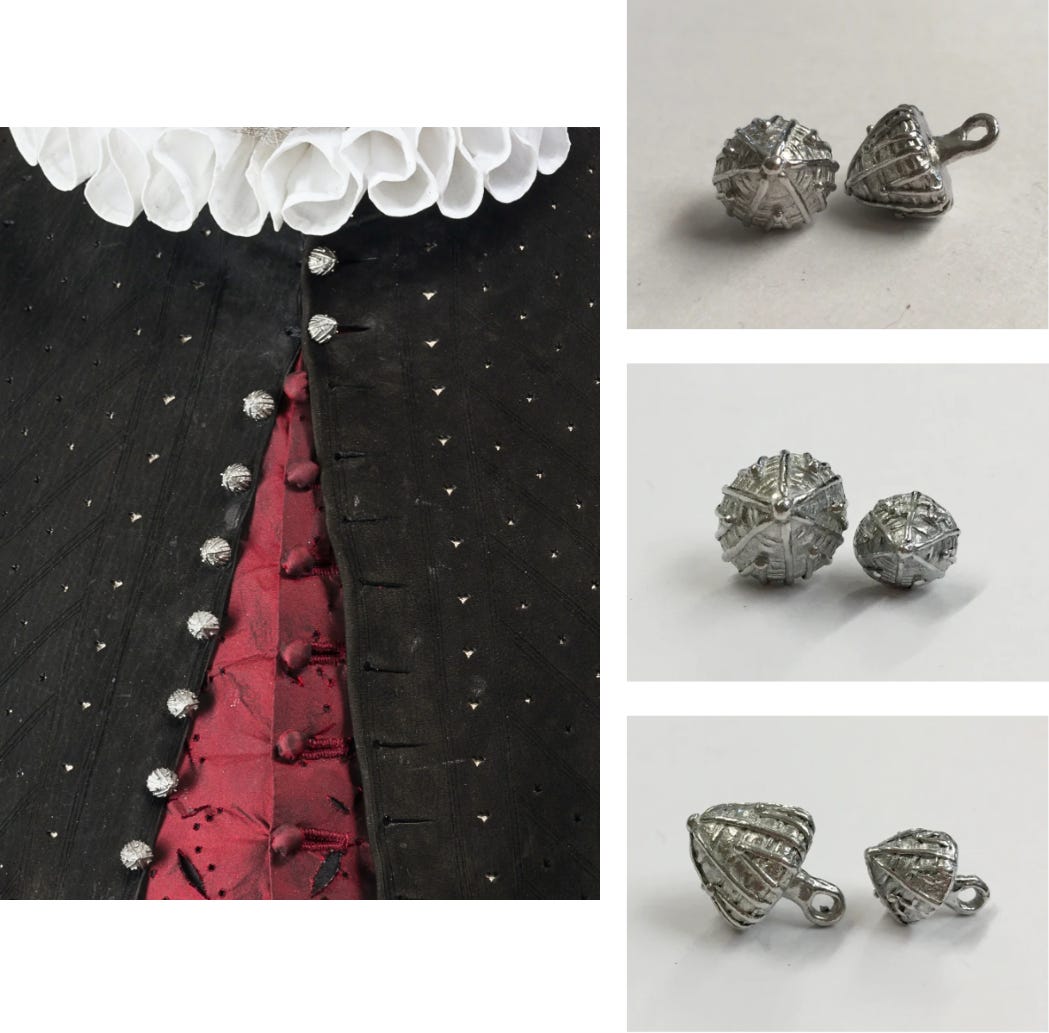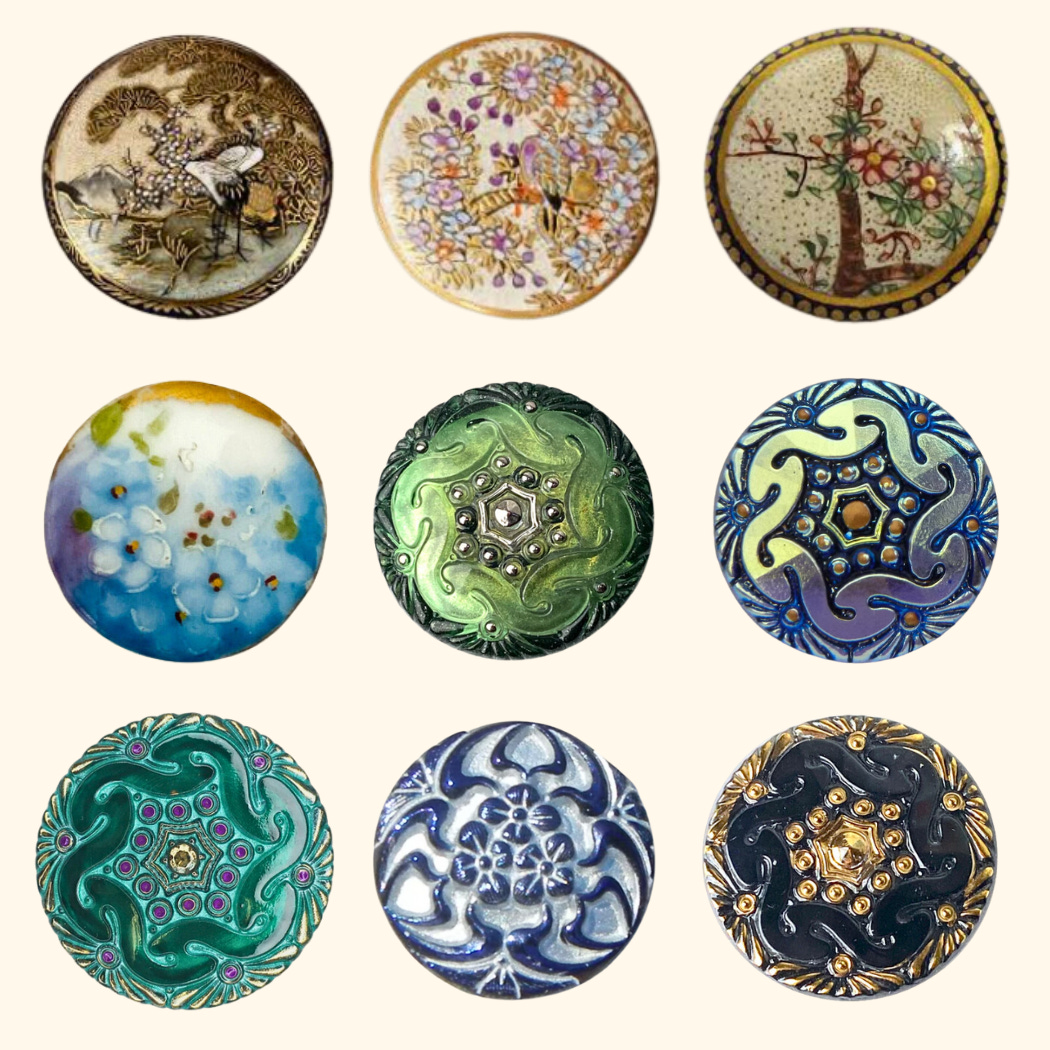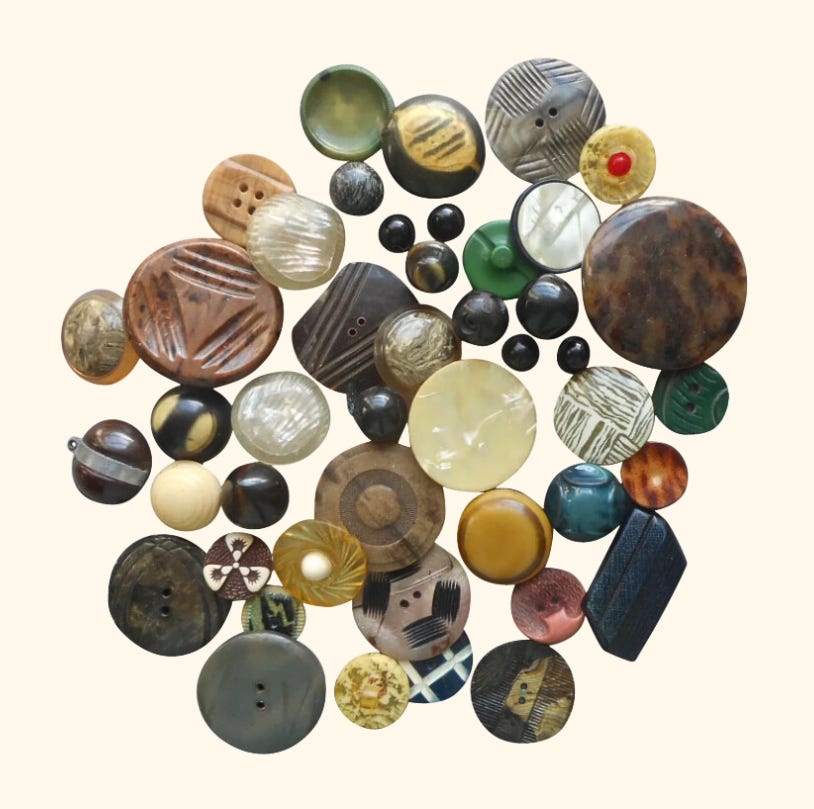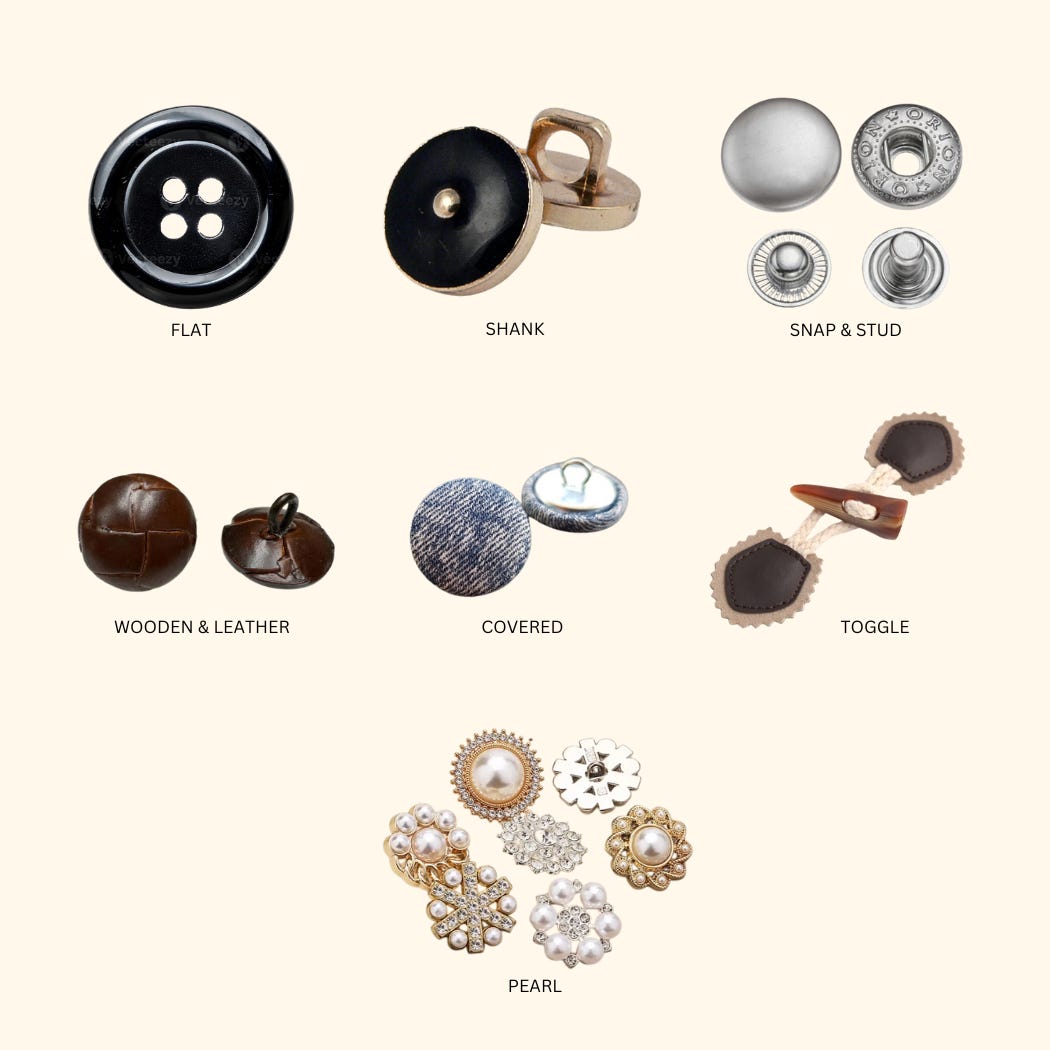SS-32: The History of the Button: Small but Mighty
Buttons. We fasten them without a second thought, yet they’re tiny, powerful details that have shaped fashion and practicality for centuries.
From simple shell disks in the ancient Indus Valley to symbols of wealth and status, and eventually, to the everyday staples we know, buttons are as fascinating as they are functional.
Let’s take a journey through their evolution and explore how these tiny details continue to influence style.
Ancient Origins: From Ornament to Status Symbol
The story of the button begins around 7000 BCE, with the earliest known "button-like" object found in a burial site in Mohenjo-daro, part of the ancient Indus Valley Civilization (in present-day Pakistan). This small, shell disk had a drilled hole—an early hint of buttons to come.
Other artifacts from nearby sites, dating back to 4000-5000 BCE, reveal disks carved and decorated from materials like bone, ivory, clay, and stone. These early buttons, with tiny holes for thread, weren’t placed in straight rows like today but arranged in intricate geometric patterns. More than just functional, they were a form of art.
These early "buttons" likely served as ornamental embellishments, signifying wealth or status rather than as fasteners. Over time, buttons began to function more practically, with ancient Romans using them to hold garments in place.
In China, the earliest recorded button dates back to 1000 BCE during the Zhou Dynasty.
This knot-and-loop button style eventually traveled west along the Silk Road with other innovations such as paper, arriving in Europe via the Mediterranean during the Crusades in the late 11th century.
The Medieval Times and the Button Beginnings
During medieval times, buttons were often used as trade goods, and exchanged as valuable commodities.
Initially, they were made from precious materials like ivory, precious metals, and gemstones, making them a symbol of wealth and prestige.
However, these buttons were often decorative rather than functional, as the practical buttonhole had not yet been developed. Instead, garments were secured using lacing, stitches, ties, and other methods.
The Renaissance and the Buttonhole Revolution
The Renaissance brought a transformative shift in the use of buttons. With the invention of the buttonhole, buttons moved from mere decoration to essential fasteners, reshaping fashion across Europe.
As buttons became reliable fasteners, clothing could be worn closer to the body, making garments like coats warmer and dresses more form-fitting. This innovation unlocked fashion, ushering in styles that were more tailored, efficient, and diverse than ever before.
Industrialization: Buttons for Everyone
The Industrial Revolution democratized button use, making them accessible beyond the wealthy.
Mass production allowed for diverse materials, from glass and porcelain to early plastics to arise.
By the Victorian era, buttons became central to expressions of love, sentiment, and status, with designs featuring intricate scenes and symbols.
20th Century Onward: Style and Statement
In the 20th century, buttons found their place at the intersection of utility and fashion. Designers began experimenting, using buttons as statement pieces, from novelty shapes to luxurious materials. Though zippers and other fasteners emerged, buttons retained their versatility, appearing on everything from high fashion to everyday wear.
Types of Buttons and Their Unique Impact
Today, buttons come in various forms, each adding a distinct touch to garments. Here are seven different styles:
Flat Buttons: The most common type, with two or four holes, these versatile buttons work well for daily wear.
Shank Buttons: Often found on formal wear, shank buttons feature a loop at the back, creating a bit of space between the button and fabric.
Snap and Stud Buttons: Seen in denim and casual wear, these sturdy buttons fasten with interlocking pieces, providing durability.
Wooden and Leather Buttons: These materials add natural texture and a rustic touch, perfect for casual or bohemian styles.
Covered Buttons: Typically used in formal wear, these buttons are fabric-covered, blending seamlessly into garments.
Toggle Buttons: Known for their cylindrical shape, toggles are fastened with loops, adding vintage charm.
Pearl Buttons: Made from mother-of-pearl or imitation materials, these buttons bring sophistication to feminine apparel.
Conclusion: The Hidden Power of Buttons
From ancient status symbols to modern design essentials, buttons carry a rich history and are a fundamental part of any garment’s design.
The right button choice not only enhances a piece but also harmonizes with the fabric—delicate buttons complement lighter fabrics, while sturdier options add impact to heavier materials like wool or denim.
Buttons can reflect the style of a garment: refined materials like pearl or metal bring elegance to formal wear, while wood or plastic offer an easygoing feel to casual pieces. Functionality matters too; sturdy materials work well for frequent use, while unique shapes or colors add decorative flair.
Like the finishing touch on a masterpiece, buttons have the power to elevate a garment to something truly memorable—or, if chosen poorly, detract from its appeal.
It’s all in the details, and these mighty buttons have shaped how we dress and allowed us to express ourselves for thousands of years.



